The ocean is a domain that houses numerous undiscovered creatures and plant life, which we rarely see or talk about.
Ocean plants play an essential role in oxygenizing the oceans around the universe, making up for about 70% of the oxygen of the world, which in turn provides us with fresh air.
These connected order of marine life serves as the primary food sources that help sustain some species of aquatic animals, protect them from predators and other life forms, even human activities.
In this post, we're going to show you the different types of plants in the ocean and their essential role in the ecosystem.
Table of Contents
Classification of Ocean Plants
Ocean sea plants, unlike land plants, bloom in saltwater and have the ability to live down deep into the ocean.
There is a wide range of, from beautifully endowed plants to the ones ugly in appearance. Most such as single-celled organisms to large multi-celled trees are dependent on the microorganisms in maintaining the balance of the ecosystem.
Some are highly nutritious and acts as sources for medicine, while others are carnivorous, harmful, or even poisonous.
There are fundamentally two classes of plants living in the ocean sea. Floating plants are classified based on their float, which allows them to lie freely on the water surface. And the others which are directly rooted in the ocean floor.
Unlike the former, which are easily seen floating near the water surface, the latter, on the other hand, must obtain sufficient sunlight to survive, so they are often implanted in shallow waters near the waterside.
As Biologists and garden enthusiasts wonder about the feeding habits, reproduction, survival, and preservation of these stunning beauties, one thing is sure, for them to thrive in human-made surroundings, the atmosphere needs to be equivalent to that of the ocean, well balanced with temperature, light, and pressure.
Let's now look at the different types of plants in the ocean. We also attempt to show you the bold, beautiful, and ugly plants that live in the ocean. So, you ask, what plants live in the ocean?
Read Also: Best Evergreen Ground Cover Plants
Different Types of Plants in The Ocean - Sea Plants Names
Here is a list of the types of plants in the ocean, also known as sea plants names:
1. Kelp Plant
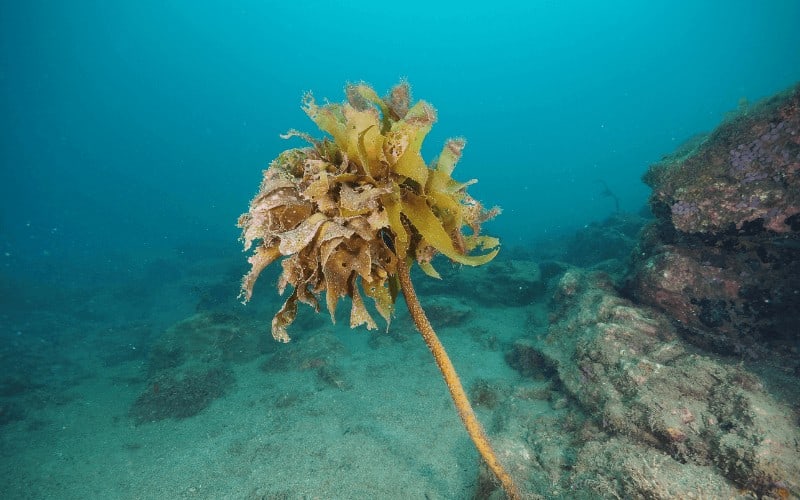
Kelp beds are one of the thriving central plants in the ocean; in the eyes of an amateur, they could pass for the usual rainforest, but an expert recognizes them as one of the thriving central plants in the ocean floor.
They are usually found in freezing ocean waters near the coastal region, although recently, there were claims of their presence in the Pacific Ocean.
Kelps are considered to be the fastest-growing and largest plants ever. Similar in appearance like the algae, they thrive best along rocky borders with depths of about 20 to 90 feet. This aquatic plant also does well with sufficient sunlight, high in nutrients.
Their anatomy allows them to adhere to the rocks with their root-like strands or stay floating with the use of small bulbous strands. Kelps grow to a height of about 250 feet, reinforcing the claims of being the largest plant in the world.
2. Red Algae

For more than 500 million years, the growth of red algae makes for almost 90% of the humid, tropical waters of the universe. It obtains its infamous red coloration from phycoerythrin, a color that retains blue light and illuminates red light.
Like kelp, red algae have a high abundance of nutrients and protein, and its nutritional benefits make it a famous food source for countries all through Asia.
Red algae are diverse, and you may be lucky to come across the coralline algae, which is one of a kind type of red algae. They are characterized by extremely fine fibers, which are hard as the rock borders that they grow on to help the structural outline of coral reefs.
3. Seagrass Plant
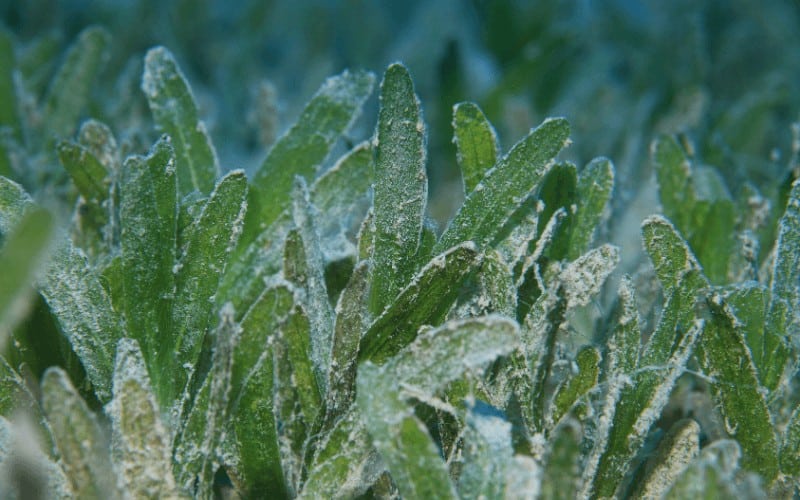
Seagrass is one of the most significant plants in the ocean. Classified as a rotted plant, it requires a great deal of light to flourish along the shallow waters of the shoreline.
There are numerous standard types of seagrass, ranging from turtle grass, through sandbar grass to manatee grass —which all fall under types of a land plant which throughout the years has developed and gained the ability to survive in saltwater.
Additionally, it serves as a mainstream food supply for lobsters and crabs all through the mild swamp waters where it usually develops.
Seagrass is incredibly vital to the ecosystem, not only because it contributes to the chore of oxygenating the ocean.
However, it additionally plays a significant role in the fertilization process of other sea plants by releasing pollen grains from its flowers to pollinate them, and it also serves as a defense habitat for smaller marine life against predators. It fills in as food for certain types of reef fish.
4. Phytoplankton
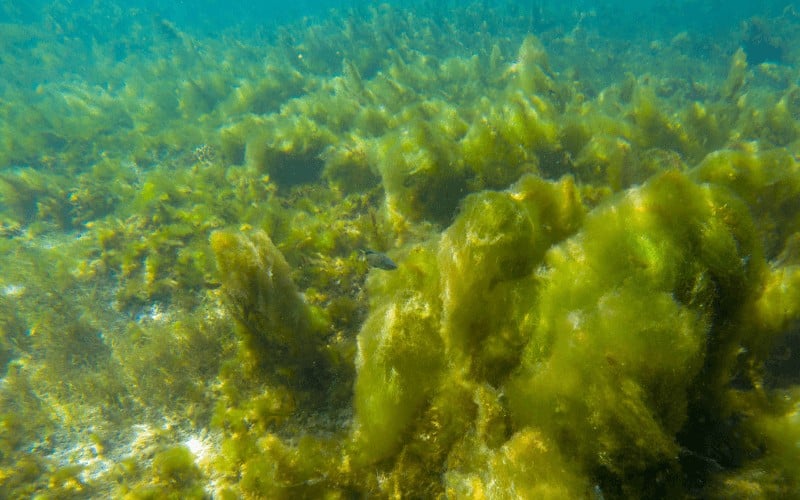
The name phytoplankton originates from the Greek word – "Phyto" which is Greek for plant – creatures classified as phytoplankton commonly belong to the Protista kingdom.
Similar to microorganisms, these species are too little to even think about seeing with the naked eye. However, they move in clusters of large and apparent groups. Just like seagrasses and kelps, phytoplankton photosynthesize.
A few researchers claim that one type of class, Prochlorococcus, maybe the highest photosynthesizing creature in the world.
Other than supply vast amounts of oxygen in the oxygenizing of the world, these single-celled, microscopic plants additionally serve as food sources to higher animals like whales.
Read Also: Fastest Growing Ground Covers For Slopes
5. Soft coral
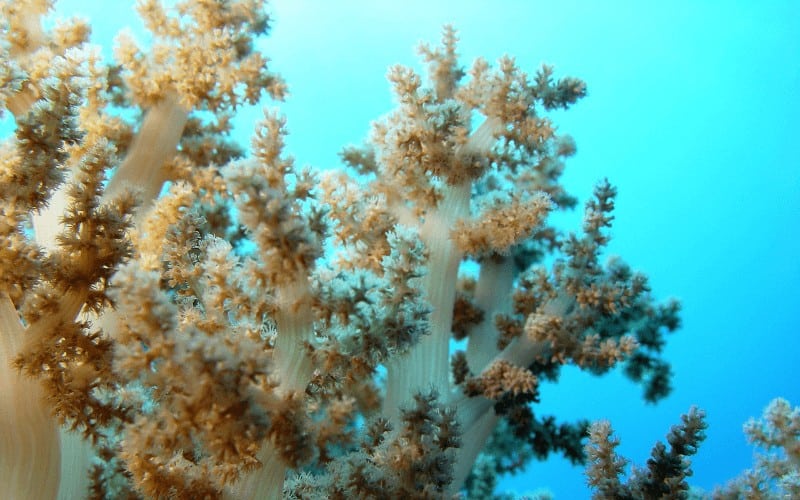
Soft coral is one of the delicate, amazing wonders of ocean plants. The softness of the coral gets its name from the texture of its surface.
The typical coral is usually hard, and these ocean plants are delicate to touch. Their body surface contains a sharp component called sclerite, which offers support and scares off predators.
Soft corals are mostly found in regions with medium daylight and serve as conducive habitat to other forms of marine life, including algae, fish, and snails, amongst others.
They display bright colors that serve as tourist attractions to tourists and even researchers, amid great ocean plants.
6. Sargassum
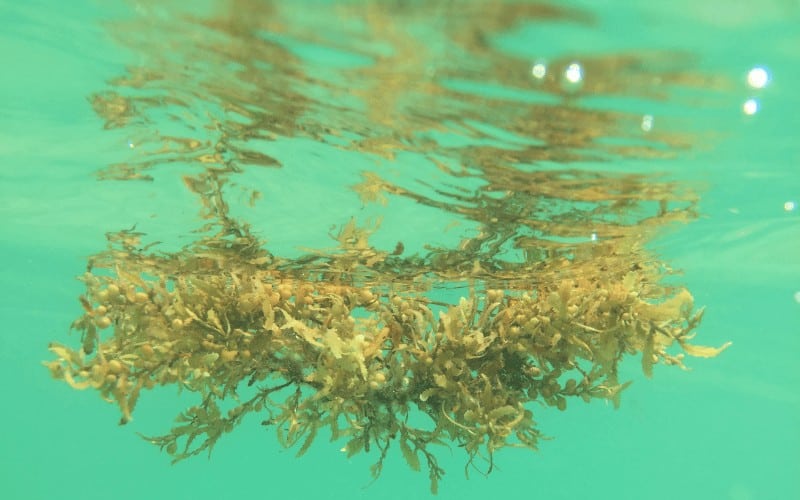
Sargassum also is known as ocean holly. The ocean holly is mostly classified as a floating ocean plant because of its characteristics, such as its berry-like gas-filled bladders that keep it above water.
Other notable features are its rugged fronds and tarnish green coloration. It also plays an essential role in the early existence of numerous ocean species.
The floating nature of its bladder keeps the plant up at the water surface, to quickly empower photosynthesis where it may be nearer to the sunlight.
This mechanism permits young ocean turtles to go to it for food and a safe house as they develop and, in the long run, reach maturation before going back home.
Sargassum is so plentiful in a gyre of the North Atlantic that it has been named the Sargasso Sea. Some marine species found inside the Sargasso Sea are discovered nowhere else on the planet!
Read Also: Fastest Growing Herbs and Vegetables
7. Sea anemone
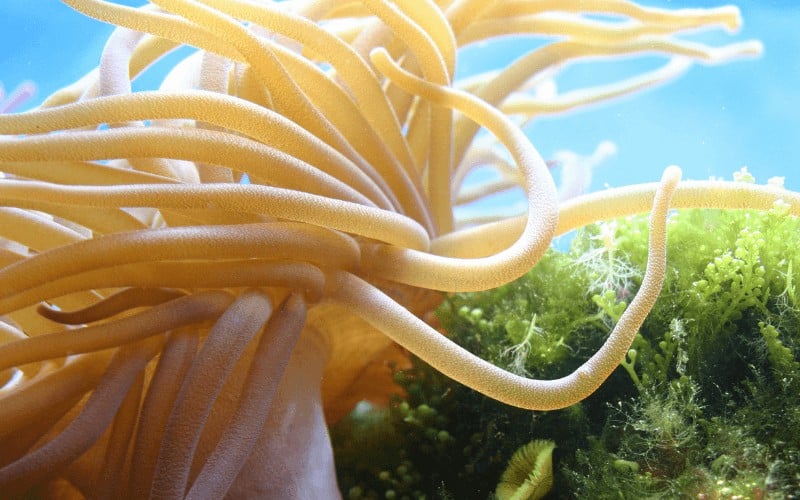
Ocean anemone is discovered developing in bunches, generally in tropical reefs; however, a few groups are likewise found in the deep blue cold waters and the Kelp areas. The body of the sea anemone consists of toxic stings that fend off predators.
The only creature immune to this poisonous sting is the clownfish, and the reason is that they both have a symbiotic relationship existing between them, where the clownfish keeps the sea anemone tidy and clean. In return, the sea anemone provides a safe shelter for the clownfish.
8. Irish moss
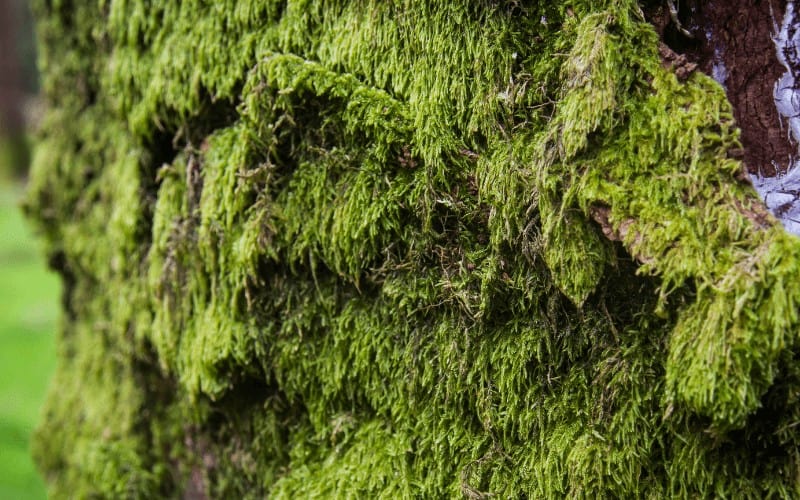
The Irish moss is a vegetative plant that is native to the Atlantic Ocean. It can likewise be found in the oceans around North America and Europe.
Irish moss is highly rich in proteins and minerals. Hence, a few people incorporate them into different food recipes.
When cooked in tons of water, it turns to a jam-like surface because of its delicate nature. The Irish moss thrives best among the rock coastline zones of the sea.
It appears in different colors ranging from purple, green-brown, red, or yellow.
9. Water Hyacinth aquatic plants
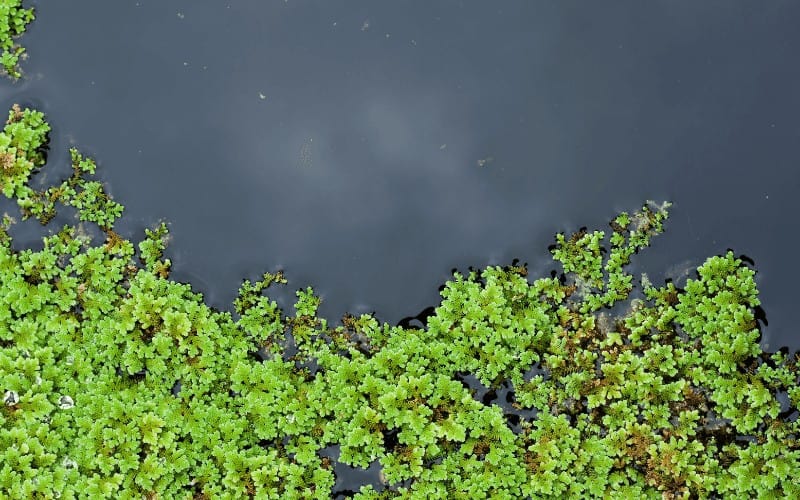
Water Hyacinth's plant is one of the most sought-after ocean plants, and the reason is not farfetched. Their splendid violet or bright blue color is an art to behold.
However, contrary to what people think, it's not only on land they flourish. They spread under the ocean effectively as well.
The uses of hyacinths plants are numerous; they can be used for medicinal intentions, wastewater treatment, producing ropes and furniture, biomass and are often consumed in certain parts of the world.
Recommended Readings:
- Fastest Growing Vegetables in India
- Different Succulent Plant Types
- Different Types of Plants in The Desert
- Top Medicinal Plants
- Names Of Flowers
Conclusion
Ocean plants consist of some of the most vital parts of the ecosystem, even though People don't recognize their importance.
This list of plants in the ocean is only a tiny fraction of the vast ocean biosphere; as scientists and researchers continue to explore the ocean biomass, this article intends to show you around the different types of plants in the ocean already discovered.




